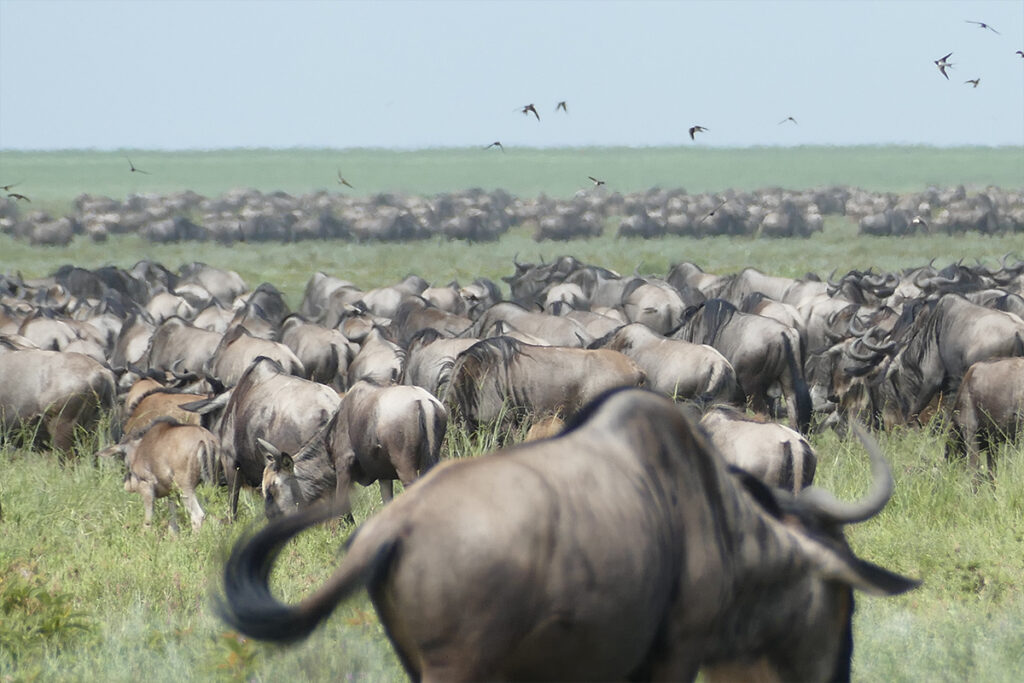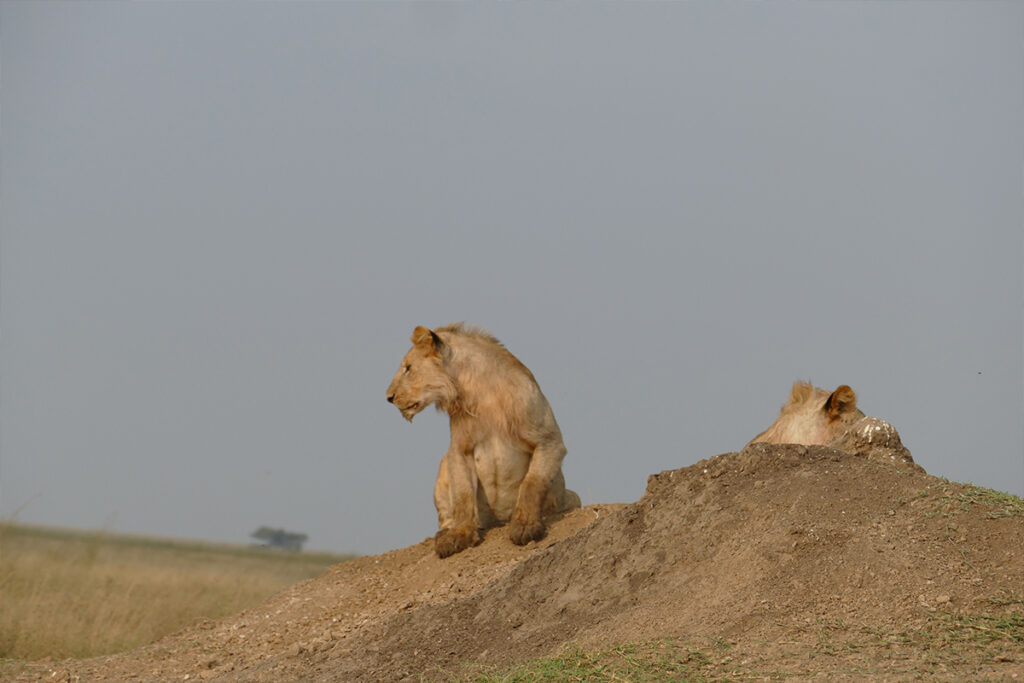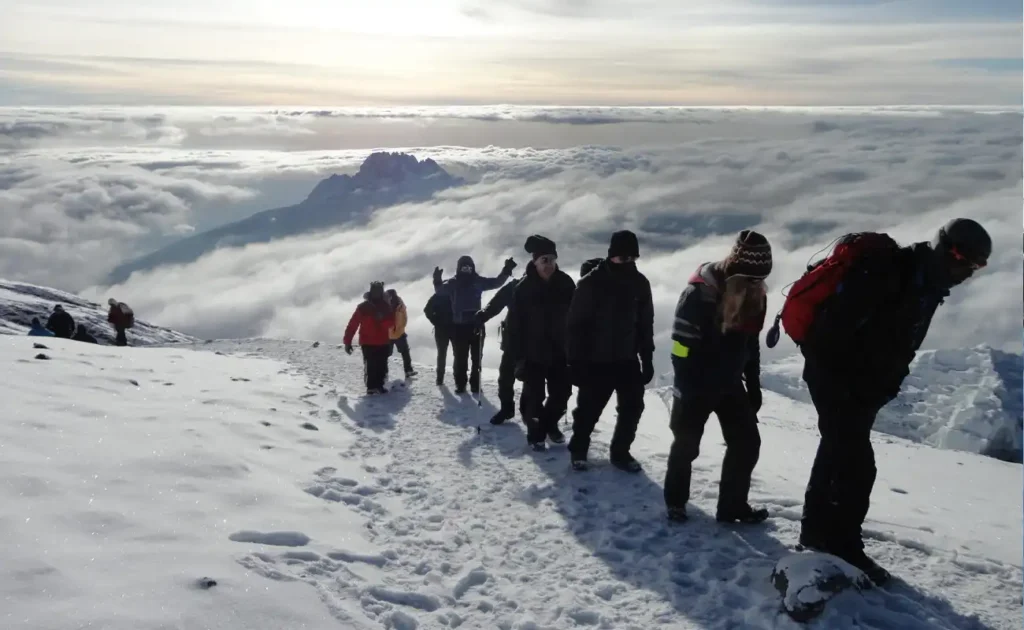Scaling the heights of Mount Kilimanjaro is a dream for many adventurers, but did you know that over 75% of climbers experience some form of altitude sickness? This condition can range from mild symptoms, like headaches and dizziness, to more serious health risks. Proper acclimatization and preparation are essential for ensuring a safe and successful ascent.
To mitigate the risks associated with altitude sickness, adopting a gradual ascent strategy is crucial. Historically, climbers have noted that taking “pole, pole” (slowly, slowly) approach allows the body to adapt to lower oxygen levels effectively. Furthermore, staying hydrated and maintaining a high-carbohydrate diet can significantly enhance your body’s performance at high altitudes.

Altitude Sickness Tips: Staying Safe on Kilimanjaro
Climbing Kilimanjaro is an incredible adventure, but altitude sickness can pose a real threat to your journey. It’s important to understand what altitude sickness is. The sickness occurs when you can’t get enough oxygen from the air. This is common on high-altitude treks like Kilimanjaro. Symptoms include headaches and nausea.
Preparing for a safe climb involves taking the right precautions. One of the best ways to avoid altitude sickness is to ascend slowly. Allow your body time to adjust. You should also stay hydrated and rest as needed. Eating high-energy foods will keep your strength up.
Packing the right gear is essential for a successful climb. A must-have list for climbers includes warm clothing and a first-aid kit. High-calorie snacks can help. A portable oxygen canister might also prove useful. Don’t forget sunscreen and sunglasses.
Finally, knowing how to react if symptoms worsen is crucial. If you experience severe symptoms, descending to a lower altitude is necessary. Always inform your guide if you feel unwell. They’re trained to help you manage these challenges. Remember, safety comes first, and there’s no shame in turning back this time to try again later.
Is Climbing Kilimanjaro Safe? (How to Reduce the Risk)
Understanding Altitude Sickness
Altitude sickness, also known as acute mountain sickness (AMS), typically starts at elevations above 8,000 feet. It occurs because the body struggles to adapt to the lower oxygen levels at higher altitudes. Symptoms usually appear within hours of ascent. They may include headache, dizziness, nausea, and fatigue. Mild symptoms are common and usually not dangerous.
Several factors can affect the severity of altitude sickness. These include how quickly a person ascends, physical fitness levels, and genetic predisposition. Even the fittest climbers can experience AMS. It’s not just about physical ability; it’s about how the body adjusts to the altitude. Gradual ascent helps reduce the risk.
Preventing altitude sickness involves following simple but effective steps. For instance, climbers can avoid caffeine and alcohol as these can increase dehydration. Proper hydration is key. Drinking 3-4 liters of water daily can help. Taking frequent breaks during the climb allows the body to acclimate.
If symptoms progress, taking immediate action is vital. Severe cases might lead to High Altitude Pulmonary Edema (HAPE) or High Altitude Cerebral Edema (HACE). These are life-threatening and require immediate descent and medical attention. Recognizing early signs and listening to your body can make all the difference on the climb.
Symptoms and Risks of Altitude Sickness on Kilimanjaro
Altitude sickness on Mount Kilimanjaro can start with mild symptoms. Common signs include headache, nausea, and dizziness. You might also feel unusually tired or experience shortness of breath. These symptoms are the body’s response to lower oxygen levels. They often appear within hours of reaching higher altitudes.
More severe symptoms can develop if ignored. These include confusion, loss of coordination, and severe breathlessness. There’s a risk of developing High Altitude Pulmonary Edema (HAPE), where fluid builds up in the lungs. High Altitude Cerebral Edema (HACE) involves swelling in the brain. Both conditions are serious and need urgent medical attention.
Recognizing the symptoms early can prevent severe complications. If you experience mild symptoms, stop and rest. Drinking water can help, as can over-the-counter medications for headache and nausea. Descending to a lower altitude usually relieves symptoms quickly. Pay attention to how your body feels.
Taking precautions can reduce the risks. Ascend gradually and take rest days to acclimate your body. Avoid alcohol and heavy physical exertion at higher altitudes. Keep a close watch on your fellow climbers’ health. Altitude sickness can impact anyone, regardless of fitness level or experience.
Preventive Measures Against Altitude Sickness
Preparing for a high-altitude climb like Kilimanjaro requires careful planning. The best preventive measure is ascending slowly. Taking time allows your body to adjust to reduced oxygen levels. It’s recommended to follow the “climb high, sleep low” approach. This means trekking to a higher elevation during the day while sleeping at a lower one at night.
Staying well-hydrated is essential for altitude acclimatization. Drink at least 3-4 liters of water each day. This helps your body process oxygen more efficiently. Avoiding alcohol and caffeine can also help manage dehydration. These substances can worsen altitude sickness symptoms.
Consuming a balanced diet with plenty of carbohydrates can improve your energy levels. Carbohydrates require less oxygen to metabolize. Foods rich in carbs include pasta, rice, and bread. Eating regularly can provide the energy needed for strenuous activities. Snacks such as nuts and dried fruits offer quick energy boosts.
Medication can be another effective preventive tool. Some climbers use acetazolamide, which can help mitigate altitude sickness symptoms. It’s best to consult with a doctor for appropriate dosages. Other medications might also suit different health profiles. Always carry a first-aid kit for emergencies.
Rest is as vital as physical preparation. Listen to your body when you feel tired. Overexertion can increase the risk of altitude sickness. Take breaks frequently to allow for recovery. Resting adequately can make your climb more enjoyable and safer.
Essential Items to Pack for Kilimanjaro Climb
Climbing Kilimanjaro requires careful preparation, and packing the right gear is crucial. Your packing list should focus on essentials for survival, comfort, and safety. Consider the varying temperatures and weather conditions. The right clothing and equipment can make the difference between success and failure. Here’s a checklist to guide you:
- Layered Clothing: Include base layers, insulating layers, and waterproof gear.
- Footwear: Sturdy, waterproof hiking boots and comfortable camp shoes.
- Sleeping Gear: Sleeping bag rated for cold temperatures and a sleeping mat.
- Hydration System: Water bottles or hydration packs to carry sufficient water.
- First-Aid Kit: Basic medical supplies, including blister treatment and medications.
Quality sun protection is also essential when climbing Kilimanjaro. The high altitude means you are closer to the sun, and the risk of sunburn and UV exposure increases. Pack items like sunglasses with UV protection, a wide-brimmed hat, and high-SPF sunscreen. Lip balm with sunscreen will protect your lips from harsh conditions.
Snacks and nutrition are vital for maintaining energy levels during the climb. Bring high-energy, easy-to-carry snacks such as trail mix, jerky, and energy bars. These will keep you fueled without adding too much weight to your pack. Remember that eating regular, small meals can help your body manage the physical demands of the trek.
Don’t forget critical items for navigation and communication. A headlamp with extra batteries will be useful for early starts and late finishes. Carry a map, compass, or GPS device to stay on the correct route. A reliable communication device, like a satellite phone, can be crucial in emergencies.
Health Tips and Proper Acclimatization for a Successful Climb
Preparing for a Kilimanjaro climb involves more than just packing. Your health will directly impact your success. Start by getting a health check-up to ensure you’re fit for high-altitude trekking. Building up cardiovascular fitness is key. Regular aerobic exercises like running, swimming, or cycling can help.
Acclimatization is the process of allowing your body to adapt to lower oxygen levels. Plan your climb to include rest days at intermediate altitudes. This gradual ascent helps in minimizing altitude sickness. Spend time hiking at increasing altitudes before the climb if possible. This pre-acclimatization aids in adaptation.
Monitoring your body’s condition throughout the climb is critical. Keep an eye out for any signs of altitude sickness, such as headaches or dizziness. Don’t ignore your body’s warnings. Rest and hydrate when needed. If symptoms persist, consider descending to a lower altitude.
Maintaining energy levels during the climb requires attention to nutrition. Aim to eat a balanced diet rich in carbs and proteins. These nutrients will fuel your exertions on the mountain. Snacks like nuts and energy bars can provide quick energy boosts. Staying well-nourished supports acclimatization.
Finally, mental preparation is as vital as physical training. Cultivate a positive mindset to tackle challenges on the mountain. Remember that reaching the summit is a team effort. Encourage fellow climbers and listen to your guides’ advice. Together, these actions contribute to a successful climb.
Key Takeaways
- Acclimatize properly by ascending slowly and taking rest days.
- Stay hydrated and avoid alcohol or caffeine to combat altitude sickness.
- Eat a high-calorie, high-carbohydrate diet for sustained energy levels.
- Bring preventive medication like acetazolamide if needed.
- Monitor for symptoms and descend immediately if they worsen.




